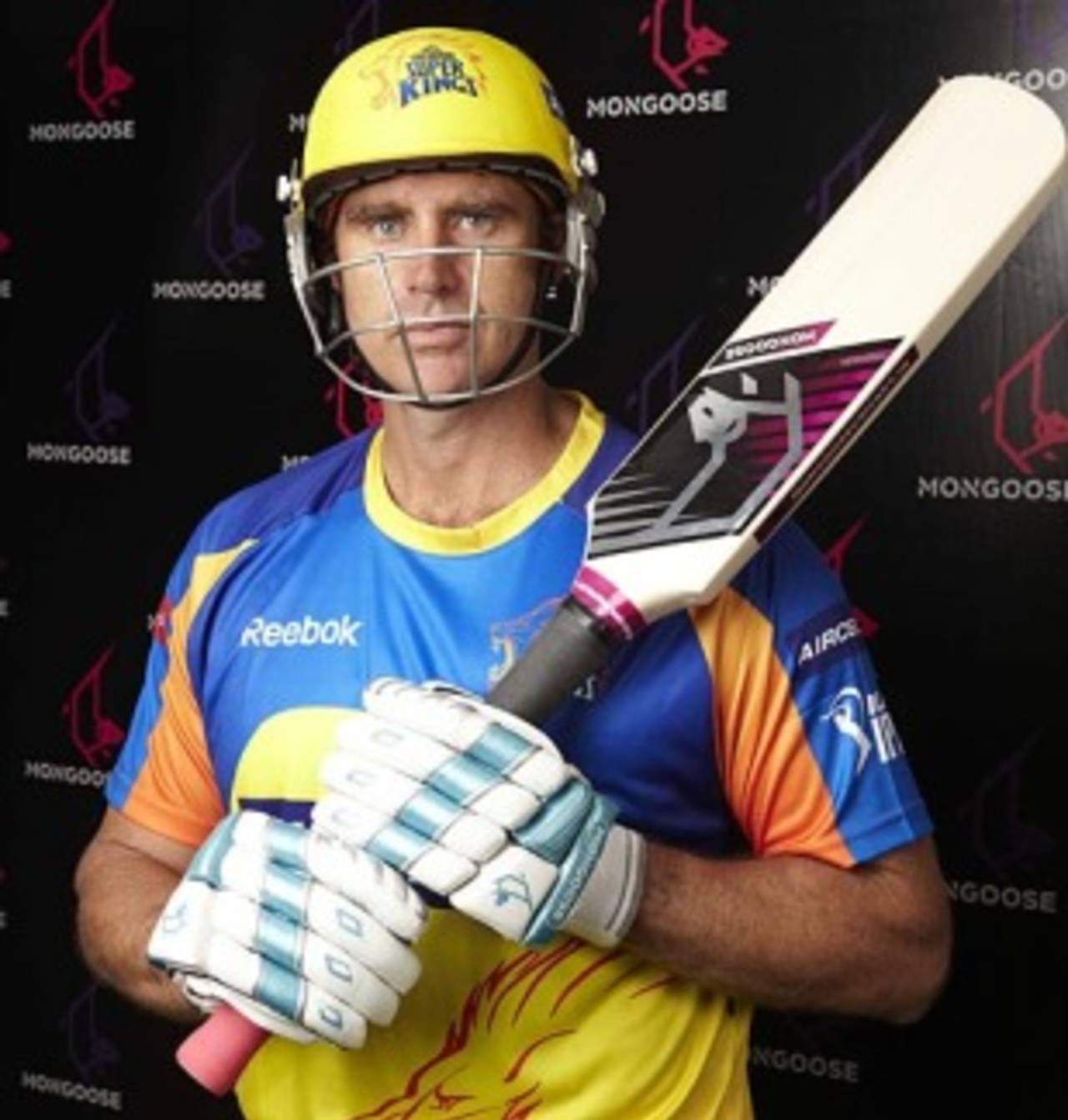Marcus Trescothick has a particular goal this season, other than to lead Somerset to their first championship title. This supreme county cricketer has been promised £1m by his new bat maker, Mongoose, if he clears the three-storey pavilion at Lord's. It is a feat that has been achieved only once in the history of the game, by Jonathan Trott's distant relative, Albert, in 1899, although various batsmen down the years have peppered the guttering, the top tier and the turret that once housed the Test Match Special commentary team.
If any batsman can achieve what would be a stupendous hit - the great Victorian pavilion stands 210 feet from the crease at the Nursery End and is more than 50 feet in height to the top of the pitched roof - it is Trescothick, along, perhaps, with Kieron Pollard and Kevin Pietersen. Apart from his natural sense of timing, this could become possible as a result of the enhanced power of a new long-handled bat that looks like a wooden paddle. It is called Mongoose MMi3.
The bat, comprising 90% English willow and 10% Kashmir willow, has been designed for Twenty20 cricket, and in particular the Indian Premier League, but is also a model in keeping with a general trend of faster scoring in the game, initially pioneered by Steve Waugh's Australians. Batsmen are becoming stronger and fitter and are going to the gym as much as to the nets. They desire bigger yet lighter bats with huge edges and an enhanced sweet spot.
The bat that Trott used to clear the pavilion is on display in the museum at Lord's. This weighs 2lb 3oz, compared to the Mongoose's 2lb 7oz - 2lb 15 oz, although the moisture content has evaporated to the extent that it is hard to gauge what its weight was in 1899, when Trott belted the ball out of the ground and into Grove End Road. WG, too, liked to club the ball, partly on account of his unathletic build, but in the Golden Age the likes of Ranji favoured light bats for their wristy, feathered strokeplay. Not until Clive Lloyd, Graham Gooch and Ian Botham looked to bludgeon spinners out of the attack did the 3lb bat become notably popular.
"They only just about got away with using heavy bats," said Marcus Codrington, the chief executive of Mongoose. "But technology is now improving along with the strength of batsmen - there are not too many waif-like David Gowers at the top of the game. Sachin Tendulkar's bat looks like a ferocious beast. The sweet spot is extended and the game is changing. The reason Trescothick likes our model is that the extended handle works like a golf club to give more head speed. The ball travels faster off the bat through increased velocity."
Hence the higher up the bat Trescothick hits the ball, the faster it will come off. "Although Marcus strikes most of his shots in the meat, that is what most excites him,"said Codrington. The process by which bats can simultaneously be light and powerful is down to extracting the moisture content by leaving them to dry in the open air. The drawback, however, is that these then become brittle, lose elasticity and not last as long. Manufacturers are now aiming for 12-15% moisture content in a bat, whereas in Trott's time this would have been as much as 35%. Hence the wood used would have been a third heavier.
Mongoose, which was founded only 18 months ago, was the first bat-maker to question the design that has been conventional since the days of Trott and WG. The upshot is that the weather-beaten farmers and drovers who populate the Old Pavilion on the short straight boundary at Taunton had better keep their heads down when Trescothick is at the crease this season. Codrington believes that in due course Twenty20 will have to encompass target hitting in a form of cricketing darts. "The game will return to its original ambition - hitting. Power is at the centre of professional sport and the law-makers will adapt the game to cater for that. Maybe in time pitches will become uncovered again."
Other bat-makers are following Mongoose's lead. In the spring catalogues, Newberry emphasise thick edges, although Murray Goodwin, for one, is hardly in need of them. Research indicated that when using their bats, he consistently hit the ball from within the same two square inches. Morrant has developed a "T20" that refers to "bowed blade, massive edges and a contoured profile for incredible feel and power". If that sounds hyperbolical, it is an indication of the market for batsmen intent on domination in the shortest form of the game.
There is a limit to the number of times spectators will want to see the ball fly over the boundary, for this should remain a treat. But there is no doubting that observing Trescothick trying to emulate Trott with a piece of willow that looks as if it belongs in the Boat Race will be fascinating. Can he do it? He says: "Technology is moving on. It is only a matter of time until someone does clear the Lord's pavilion."
This is the eighth article in a series on cricket's innovations, sponsored by SAAB.
